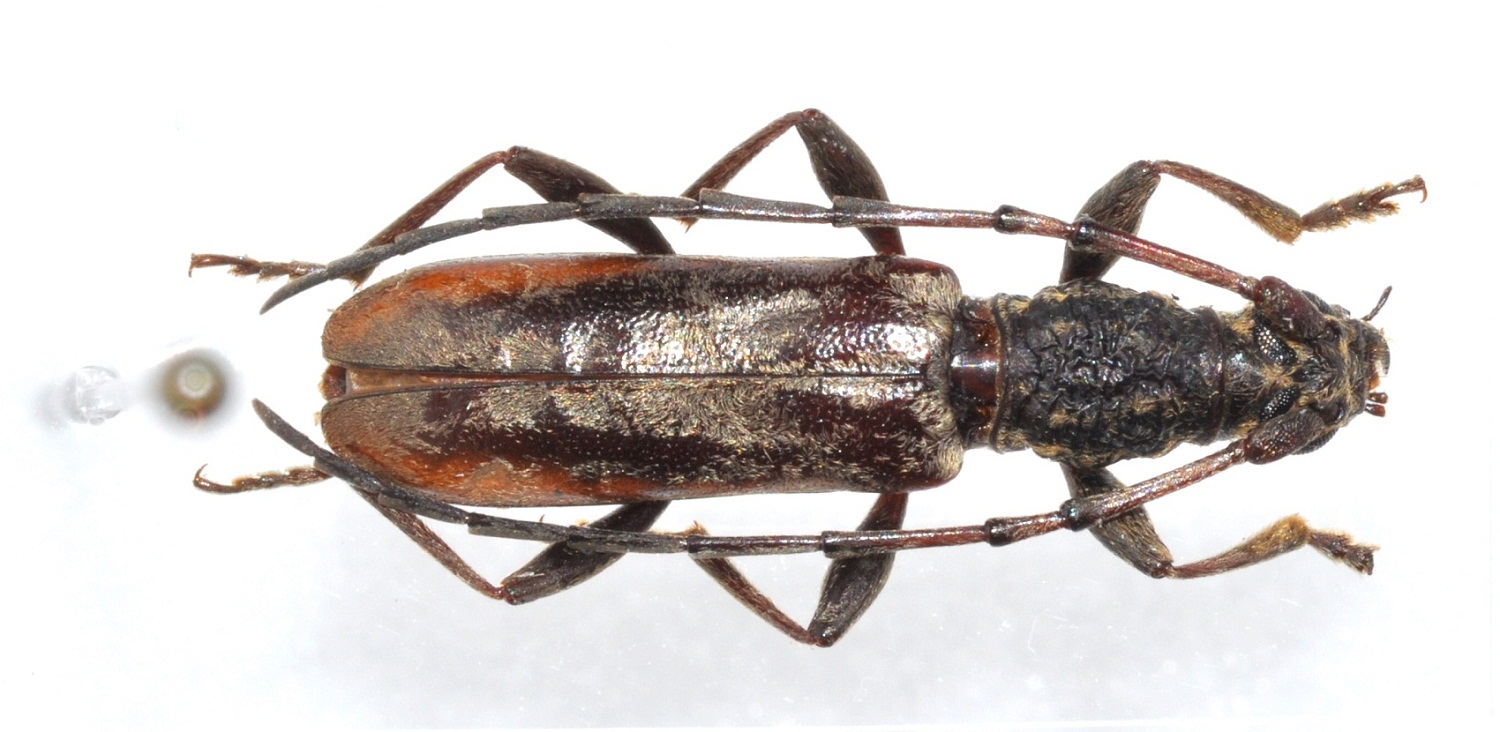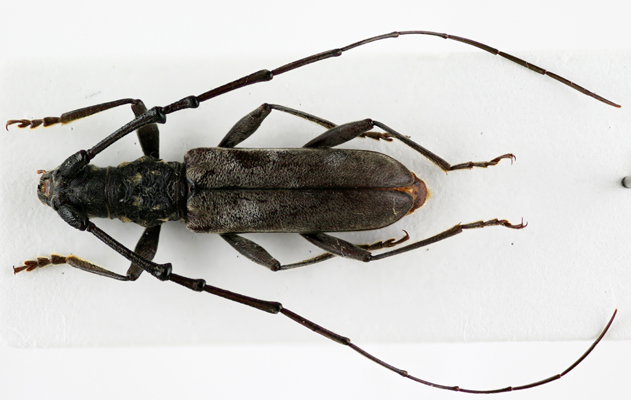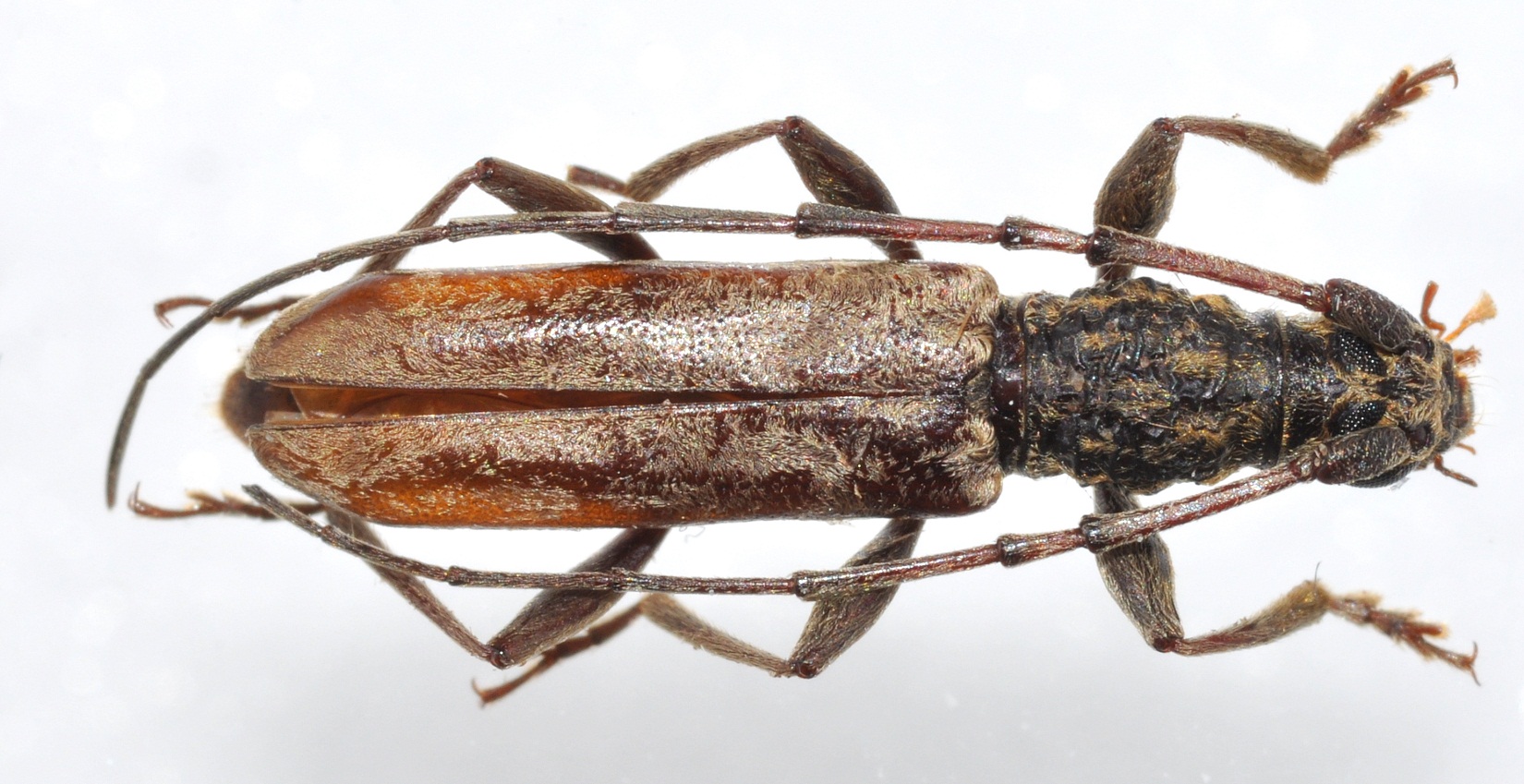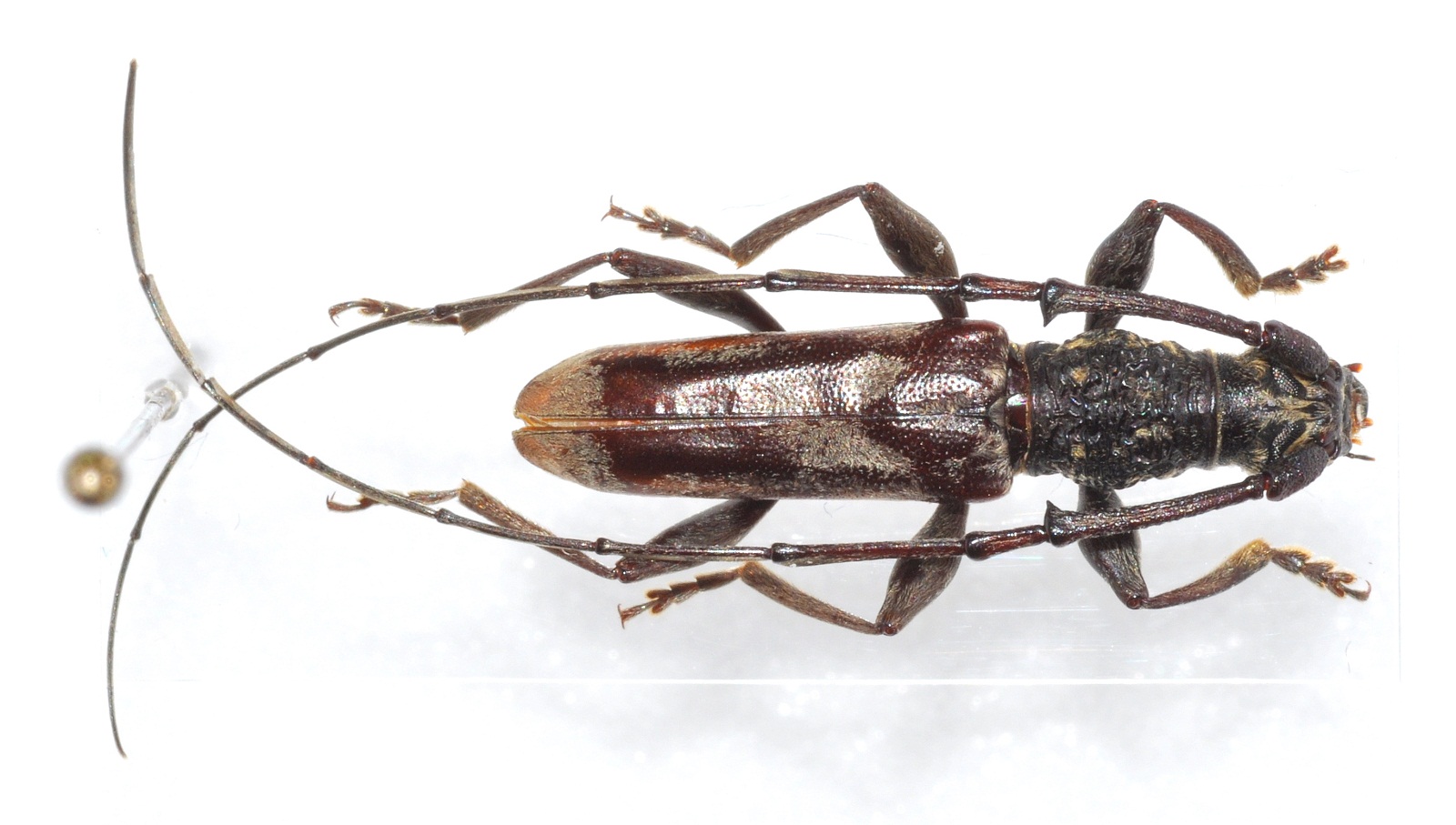| Author |
 Topic Topic  |
|
|
Pierre
Member Rosenbergia
   
Switzerland
1769 Posts |
 Posted - 27/03/2011 : 12:20:48 Posted - 27/03/2011 : 12:20:48



|

A female of some Derolus?
Togo, 14mm. |
|
|
Francesco
Forum Admin
    
Luxembourg
9511 Posts |
 Posted - 27/03/2011 : 12:38:20 Posted - 27/03/2011 : 12:38:20




|
| Possible... does it have a longitudinal ridge along the ventral side of the femora? |
 |
|
|
Pierre
Member Rosenbergia
   
Switzerland
1769 Posts |
 Posted - 27/03/2011 : 13:43:17 Posted - 27/03/2011 : 13:43:17



|
| Yes. Difficult to find as the whole body is densly pubescent. |
 |
|
|
Francesco
Forum Admin
    
Luxembourg
9511 Posts |
 Posted - 30/03/2011 : 13:48:18 Posted - 30/03/2011 : 13:48:18




|
| With those golden spots on the pronotum, it should be Derolus parus Jordan, 1903. |
 |
|
|
Littlebeetle23
Member Purpuricenus
 
France
296 Posts |
 Posted - 02/04/2011 : 22:42:24 Posted - 02/04/2011 : 22:42:24



|

Derolus parus Jordan, 1903 belongs now to the genus Spiniderolus. And this genus is characterized by its very long and slender 3rd antennal segment ended by a tooth. I join a picture of a specimen of this species collected in Ethiopia and identified by K. Adlbauer.
So I think your specimen is a Derolus but not parus. |
 |
|
|
Francesco
Forum Admin
    
Luxembourg
9511 Posts |
 Posted - 03/04/2011 : 08:20:17 Posted - 03/04/2011 : 08:20:17




|
Actually, Derolus euparus (Aurivillius) belongs to Spiniderolus...
However, thank you very much, since this new picture allows identifying these old pictures. I was uncertain, since the revision by Lepesme & Breuning (1958) wrote about apical spines on the antennomere III and these seemed to me "obtuse strong teeth".
But well: another identified species!
Another problem is that this character is only present in males, while females apparently are "normal" Derolus (this is the raison because I did not agree Adlbauer considered the subgenus Spiniderolus as a genus). However, euparus female is very similar to parus female... did you see peculiar differences? |
 |
|
|
Littlebeetle23
Member Purpuricenus
 
France
296 Posts |
 Posted - 03/04/2011 : 09:42:58 Posted - 03/04/2011 : 09:42:58



|
In his revision of this genus, Adlbauer (2006) was doubtful about the existence of these 2 distinct species.
Normally the differences between these 2 species are light, smaller size and more slender shape for S. parus.
He concluded by some further studies could synonymize these 2 species. |
 |
|
|
Francesco
Forum Admin
    
Luxembourg
9511 Posts |
 Posted - 03/04/2011 : 10:04:27 Posted - 03/04/2011 : 10:04:27




|
Thank you!
I do not have this revision. Hence, according to Adlbauer, there is only one species: Spiniderolus parus (Jordan, 1903).
Actually, D. parus was described on the basis of a female... |
 |
|
|
Pierre
Member Rosenbergia
   
Switzerland
1769 Posts |
 Posted - 03/04/2011 : 12:02:03 Posted - 03/04/2011 : 12:02:03



|

Dear colleagues,thanks for your discussions.
Can this help? Or does this create more confusion?
A male from the same series, same data. |
 |
|
|
Francesco
Forum Admin
    
Luxembourg
9511 Posts |
 Posted - 03/04/2011 : 12:40:56 Posted - 03/04/2011 : 12:40:56




|
| At this point, I do not know what to say more ... if Mickael could identify it with Adlbauer's keys or scan a copy for us, he will be welcome... |
 |
|
|
Francesco
Forum Admin
    
Luxembourg
9511 Posts |
 Posted - 03/04/2011 : 12:47:03 Posted - 03/04/2011 : 12:47:03




|
P.s. The antennomere III of this male is clearly expanded at the internal side without forming an apical spine, while the antennomere IV is normal..
Nonetheless, the antennal proportion are very similar to that of Mickael's species.
In my opinion, Spiniderolus is no subgenus either...  |
 |
|
|
Carlo
Member Rosenbergia
   
Italy
1138 Posts |
 Posted - 03/04/2011 : 13:06:43 Posted - 03/04/2011 : 13:06:43



|
Bonjour Pierre
Est ce que tu est sûr que ton spécimen soit un mâle? Les antennes semblent très courtes
Ciao |
 |
|
|
Pierre
Member Rosenbergia
   
Switzerland
1769 Posts |
 Posted - 03/04/2011 : 14:55:55 Posted - 03/04/2011 : 14:55:55



|
Carlo, j'ai le même doute. Surtout que je viens de recevoir dans un arrivage du Togo un spécimen "mâle" bien plus mâle que celui-ci: antennes beaucoup plus longues que le corps.
J'ajouterai la photo dès que la bête sera prête. Peut-être cette fois on y verra plus clair! |
 |
|
|
Francesco
Forum Admin
    
Luxembourg
9511 Posts |
 Posted - 03/04/2011 : 15:45:38 Posted - 03/04/2011 : 15:45:38




|
Böh... selon les données de la monographie de Lepesme & Breuning (1958) parus (type à Paris) avait un range de 9.5-17 mm, tandis que euparius (type a Stockholm?) était parmi 12 et 27 mm.
Peut-être que la dimension de l'épine (ainsi comme la longueur des antennes) dépende de la longueur du corps... de toute façon je ne suis pas de tout convaincu de cette systématique... |
 |
|
|
Pierre
Member Rosenbergia
   
Switzerland
1769 Posts |
 Posted - 06/04/2011 : 22:09:45 Posted - 06/04/2011 : 22:09:45



|

Well, this time we got it. A male, a real!
Same location than the females, 16mm. |
 |
|
|
Francesco
Forum Admin
    
Luxembourg
9511 Posts |
 Posted - 07/04/2011 : 19:32:15 Posted - 07/04/2011 : 19:32:15




|
This is really a male of Spinederolus!
According to the characters Mickael quoted in order to distinguish parus from euparius, it should be S. parus... a species well different from S. euparius!
Desolé... mais si Adlbauer pense qu'il sont la même espèce, il me semble qu'il se trompe...  |
 |
|
| |
 Topic Topic  |
|


